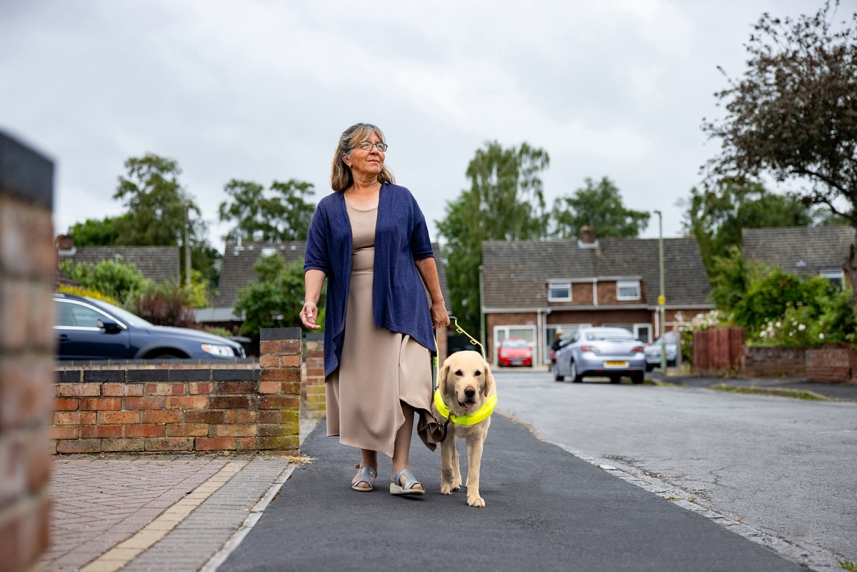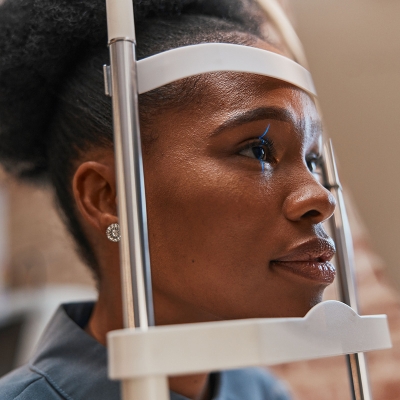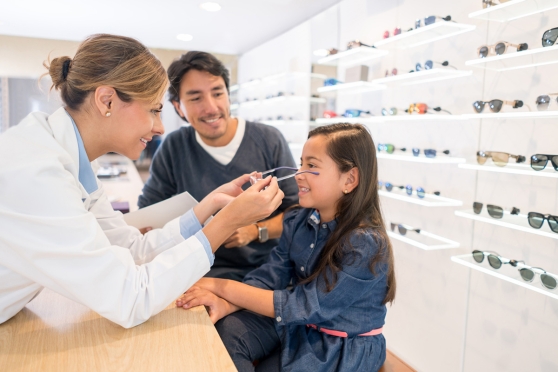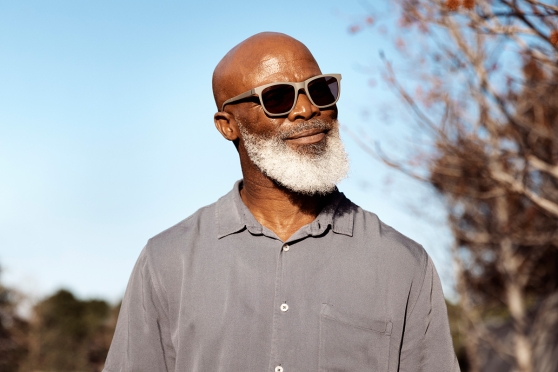How to manage vision loss in one eye
Here are ways a person can learn to live a happy, independent life with limited eyesight.

Kids often hear this from their parents: They only have one set of eyes.
A person may lose vision in one eye — or be born with a health issue like anophthalmia. That’s when they are born without one or both eyes.1 Only having one eye can be a serious and life-changing experience.
But with the right strategies and support, a person can adapt. They can even live a happy and independent life. Here’s how to manage vision loss in one eye.
Providers in the UnitedHealthcare Vision Network are here to help keep your vision healthy. Search for an eye care provider now.
What can cause vision loss in one eye?
Someone may be born without vision in one eye and while it’s unclear what causes it, it could be related to changes in a baby’s genes or chromosomes. It could also have to do with using certain medicines during pregnancy.1
One eye can also lose vision because of an accident or injury. These could include:2
- Chemical burns
- Complete detachment of the retina
- Severe eye infection
- Sports injuries (like baseball or hockey)
- Stroke in the eye
For older adults, vision loss in one eye may happen because of:3
- Age-related macular degeneration (AMD). This is a type of eye condition that can damage a person’s central vision. It can affect one or both eyes.
- Cataracts. This is a clouding of the eye’s lens. It can affect one or both eyes. It’s the leading cause of vision loss in the U.S.
- Diabetic retinopathy. This happens when blood sugar problems hurt the small blood vessels in the retina. It can affect one or both eyes. It’s the leading cause of blindness in American adults.
- Glaucoma. This is a group of eye diseases that can damage the optic nerve in the eye, which can lead to vision loss or blindness in one or both eyes.
Other ways someone might lose vision in one eye could include:2
- Blocked blood vessels to the retina
- Complications due to premature birth
- Complications from eye surgery
- Stroke
- Trauma or injury
- Tumors
How a person can protect their remaining eye
If a person loses vision in one eye, it’s important to protect their vision in their remaining eye. Here are some steps they can take:4
- Wear impact-resistant glasses. A person will want to get glasses with lenses made from a strong material, like polycarbonate. These are both ultra-hard types of plastics and can help prevent injury to a person’s healthy eye.5
- Fall- and hazard-proof the house. A person will want to wear safety goggles or impact-resistant glasses when doing the lawn. They may also want to do this while playing backyard sports or other activities that can put their healthy eye in danger. Other options include tidying up and making sure the house is lit well to avoid tripping or falling.
- Wear proper eye safety gear for high-risk activities or sports. High-risk sports or activities could include:
- Archery
- Baseball
- Basketball
- Boxing
- Dodgeball
- Football
- Martial arts
- Tennis/pickleball
- Wrestling
- Lacrosse/Field Hockey
All these could put a person’s healthy eye in danger. So, wearing ASTM-certified (American Society for Testing and Materials) protective eyewear is a must. A person will want to start with eyewear that has polycarbonate lenses. They’re the most impact resistant — plus, they’re thinner and lighter than plastic. Additionally, they’re shatterproof and provide UV protection.6
What else can a person do to protect their eye’s vision?
Here are some things a person can do to protect their healthy eye’s vision:7
Make lifestyle changes. Manage the emotional and practical challenges of vision loss. This could include:
- Consider getting a service animal, like a dog, to help navigate the world. They can even help a person de-stress.
- Take up meditation and mindfulness practices. These can help a person better manage grief and anxiety.
- Take a class where an instructor walks someone through changes they’ll want to make to their daily routine.
Get regular eye exams. It’s important for a person to stay on top of their healthy eye’s eye health. Schedule comprehensive eye exams. This is to check for any vision issues early. Early detection and treatment can help maintain the eye’s health — and help someone avoid total blindness.
A great way to stay on top of your eye health is by seeing a network eye care provider. Search for one in the UnitedHealthcare Vision Network today.
Sources:
- Anophthalmia/microphthalmia Centers for Disease Control and Prevention, December 2024.
- Blindness and vision loss MedlinePlus, last reviewed August 2024.
- About common eye disorders and diseases Centers for Disease Control and Prevention, May 2024
- Living with vision loss in one eye American Academy of Ophthalmology, September 2024.
- Eyeglasses: How to choose glasses for vision correction American Academy of Ophthalmology, June 2023
- Recommended sports eye protectors Prevent Blindness
- Coping with a vision loss diagnosis Foundation Fighting Blindness


